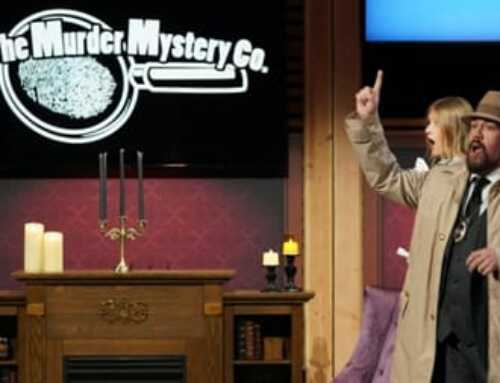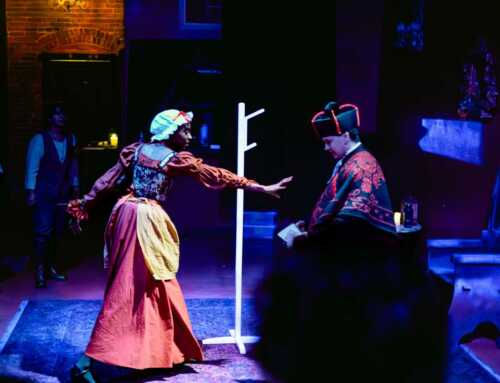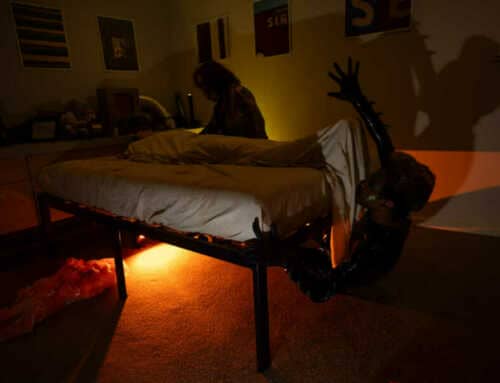The sound of my ringtone pierced the silence of what was supposed to be a typical, calm Wednesday night. I looked at the screen, expecting the name of my best friend to show up. Instead, I was greeted by “No Caller ID”. Anxious anticipation rose from my stomach as I accepted the call. Doing so started my journey down the tumultuous path of REMOTE: Call from Unrestricted, a 30-day, remote, immersive experience hosted by Haunted Hills Estates Screampark and Shock Theater.
Prior to this journey, my interactions with immersive horror were rather limited. Sure, I had done typical haunted attractions, and a few immersive experiences, but I hadn’t done anything that really pushed my limits. When I discovered REMOTE via social media, I figured that a remote horror experience would be a great way to start determining what my limits actually are and to ultimately learn more about myself, all while trying to solve the disappearance of a girl and how a sinister institution may have played a part in it. I was safe in my own home and it was only 30 days; nothing bad could happen, right?
Wrong. In my enthusiastic impulsiveness, I had failed to consider that this journey may be one full of more puzzles than mere plot. And while puzzles are great and force one to think outside of the box, I am genuinely not good at them. With the acceptance of that realization, I decided to forge on ahead since I was trying to see where my limits were. If puzzles were the thing to take me down, then that’s how I will go!
The experience was broken up into Four Phases. The First Phase was riddled with garbled phone calls and my first task: to apply to become a private investigator for an organization known as the Aurora Institute. While the phone calls proved to be a bit unsettling for me, they ended up being the scariest part of the whole 30 days. They were quick calls filled with a distorted voice over an indistinguishable background. The sound filled me with unnecessary anxiety and fear. Despite that, I was quickly hired onto the team and provided a training video. This marked the beginning of Phase 2!
The videos were supposed to be simple: solve the question presented in it, submit your answer, and get the next video. However, I would be lying if I said I breezed through the videos. The first video was spent pausing nearly every second to make sure I didn’t miss what I thought to be an essential clue; as it turns out, all my crazed notes were unessential. The questions and answers were simple, and it proved easy to progress. Once I got past the point of severe over-analyzation, I was able to fully enjoy the videos, as they were extremely well edited and animated. The music proved catchy with their beats reminiscent of those bouncing in the air of an old school arcade. I enjoyed all the videos in this whole experience, especially those highlighting past productions of Shock Theater and Haunted Hills Estates.
Along with videos, Phase 2 brought additional tasks, characters, and storylines. These tasks included research on a variety of real-world topics. I learned about moments in history that I didn’t know much about prior to this experience. This research helped to immerse myself into the world around the Aurora Institute and the characters it brought with it. The characters had depth to them and made their goals extremely apparent. They also managed to uphold their goals and react how one would if they were genuinely in the situations they found themselves in. Austin Minard (playing a character named after himself) proved to be an incredible actor. He managed to portray high stakes on such a limited platform. By interacting with him, I was able to dive into another storyline that wasn’t part of the main narrative.
It was at this point that, I was made aware of OTHER storylines by a friend I had made in game. References to these subplots would pop up randomly as my time with the Institute continued but these subplots never became a part of my main storyline since they didn’t seem to expand from these brief moments.
Phase 3 saw wisps of these subplots in the forms of an interactive game and various bosses. The “game” was like that of a card game, with power-ups and weapon cards. REMOTE hit it right out of the park in creativity with this section. The cards were themed appropriately and implemented previous characters from the subplots. Throughout the card game, we were tasked with collecting journal pages that were required for the final phase. I found the search for the pages enjoyable, so it was a bit of a bummer when they ended up not being important for the storyline.
After the card game ran its course, various temporary bosses were implemented each day. These bosses brought challenges that were to be completed. This was, by far, the most interactive portion of this experience. We were tasked with 5 challenges each day for nearly a week. Tasks ranged from posting quick answers to questions on Facebook, to more involved tasks, such as creating a scene from a movie or cleaning an area in your life. While tedious at times, this portion of the experience led to the most growth. It encouraged us to get to know the other players, as well as dive into ourselves. It was from this phase where my friendships with other players grew. We were all here to help each other and survive what was slated to be the most intense phase: Phase 4.
Armed with half of the required journal entries, new friends, and the optimism that all the storylines mentioned throughout the series would be beautifully tied up like a nice package on Christmas morning, I was ready to tackle Phase 4. I showed up more than prepared. And to be fair, the ends were tied up, but this ending package resembled more of a last-minute gift that was hurriedly put together. It was an ending that was hyped up from the beginning and throughout the experience but left me feeling like it was a little cheap.
Overall, my experience with REMOTE: Call from Unrestricted was quite tame. There were moments when the story felt incomplete, as if they were not planned out all the way, but there were also strong moments where creativity flourished. That said, 30 days is a long time for any experience to go on. The first half of REMOTE was incredibly strong, and I hope there are future stories that dive into some of the themes presented in the first half. I enjoyed this experience overall and it was a great way to experience a remote immersive event without pushing my limits. I appreciate REMOTE for the friendships I gained and for showing me that I am not as bad at puzzles as I thought.
For more information on REMOTE, visit them online at: https://www.facebook.com/aurorainteractivegames/







